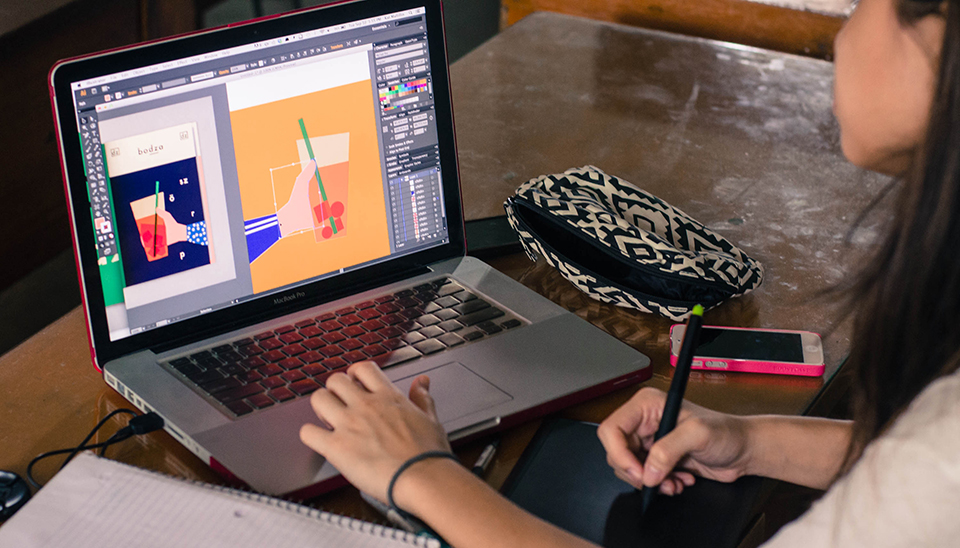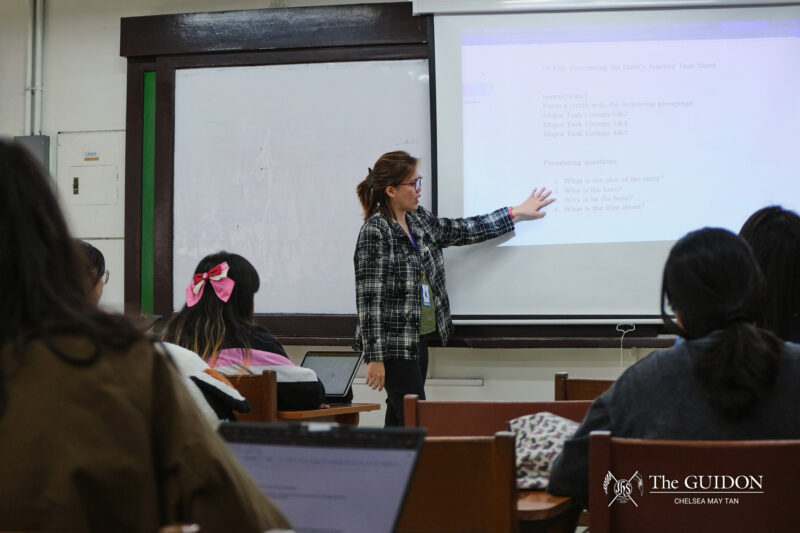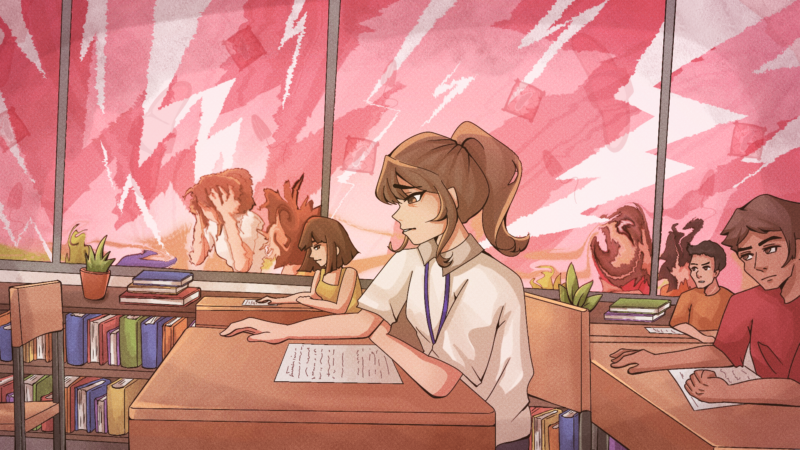Editor’s note: This article has been updated to give a fairer representation of the NGO Kaya Natin! given recent developments in the story.
The practice has become ubiquitous. Images, signs and logos associated with familiar brands are plastered all over the placards of sari-sari stores or on the imitation products of tiangge outlets. Multinational corporations have the themes of their advertisements copied by enterprising small businesses looking to take advantage of brand recognition.
Intellectual property rights for the graphic arts have always stood on shaky ground here in the Philippines. Though there exists a set of laws protecting creative visual works, the specific manner of its implementation has been subject to constant dispute.
There is no formal instruction in most schools that elaborates on how exactly intellectual property theft for visual art is delineated. As such, it is not uncommon to see people copying other artists’ work with impunity.
The implication of such a state of affairs is something sophomore political science major Jules Del Rosario quickly learned firsthand. One day, as he was casually scrolling through his Facebook newsfeed, he noticed something that immediately caught his attention.
Harvey Chua, president of The Ateneo Assembly, had posted an image in the Facebook group of Jules’ department. The image was the cover photo of the Facebook page of Kaya Natin!, a Non-Governmental Organization (NGO) focusing on “movement for good governance and ethical leadership.”
When Del Rosario first laid eyes on the image, he was aghast. The cover photo in question bore more than a striking resemblance to a promotional image he had created for The Assembly during RecWeek. “It was so blatant, it was kind of insulting,” he later says. However, the triangle patterns seen in both The Ateneo Assembly’s RecWeek promo and Kaya Natin!’s are not isolated. There have been numerous, similar patterns done by other designers.
So how can anyone definitively say that their design was stolen? This shows the wide-ranging discourse on the nature and purpose of intellectual property rights (IPR) for the visual and graphic arts.
At the moment, there exists a specific set of guidelines for what constitutes plagiarizing for written, academic texts and what doesn’t. The distinction for visual images, however, isn’t quite as clear-cut.
Intellectual property debate
On June 6, 1997, Congress passed Republic Act No. 8293, or the “Intellectual Property Code of the Philippines (IPC).” This act divides copyrighted works into 17 classes and includes among them such categories as art products, ornamental designs, photographs and cinematographic works, audio-visual works and pictures used in advertising, including logos.
According to Part I, Section 2 of the IPC or the “Declaration of State Policy,” the State maintains that the law is necessary for creativity to flourish in our country. Allegedly, it gives people the peace of mind, that their creations will not be stolen arbitrarily. Moreover, the IPC’s proponents feel that it is important to protect peoples’ privilege to use their products in any manner of their choosing, including their own personal and financial gain.
The Ateneo recognizes this. School of Humanities (SOH) Chairperson RJ Dimla cites multiple recent events as evidence that the university takes copyright violations very seriously. He refers to how a large part of the Ateneo community expressed disapproval with business tycoon Manuel V. Pangillinan for his admitted plagiarism in his 2010 graduation commencement speech. In addition, he mentions the student body’s outspoken denunciation of Vicente Sotto III in 2012 for stealing several passages in a speech opposing the Reproductive Health bill.
Unfortunately, establishing intellectual property rights for graphic and visual arts can be highly subjective. There are difficulties inherent in establishing ownership over an idea, particularly as it pertains to aesthetic works. This makes it very difficult for a policy to delineate what exactly constitutes copyright infringement and what doesn’t.
“Does a piece have to be a 100% duplicate of another work? How many elements and principles of design have been copied? How similar are the typefaces and photos used? Does one get a certain feeling of intuition when he senses a plagiarized work? The list goes on,” wrote Tata Yap, a part-time lecturer for the Fine Arts Program, in a July 2013 opinion piece for The GUIDON.
A history of IPR issues
There have been cases of IPR violations in the Ateneo practically since the school’s inception. But its intrusion into the realm of the visual arts is a fairly recent phenomenon. “The cases rose significantly. In my freshman year, there were only one to two cases. This year, during summer semester alone, I received six,” Dimla said in a July 2013 news article for The GUIDON entitled “Sanggu, COA form committee to address IPR violations.”
For instance, in 2011, the Ateneo Junior Marketing Association (AJMA) posted an apology on its Facebook page in response to copyright infringement allegations for promotional images that it used during RecWeek. This note has since been taken down.
More recently, the Company of Ateneo Dancers released a promotional image in June of 2012 that bore an uncanny similarity to a promotional image used by the Melbourne Dance Company. At around the same time, AJMA released a set of t-shirts bearing an “A,” which strongly resembles the Penrose triangle logo of The Verge, an American technology news website.
Dan Casiño of the Office of Student Activities (OSA), says that they review the promotional items disseminated during RecWeek before students are given the green light to use them. “Currently, all promos are filtered and should be filtered, by OSA,” Casiño states. However, “in terms of the IPR, we haven’t talked about the implementing rules and regulations (IRR),” he admits.
The Sanggunian, in response to the rise in the number of intellectual property rights violations for the visual arts in the Ateneo, created a committee in July to address this void in the IRR. “The motion raised at that time was a proposal by students, specifically from the Fine Arts Program, to create a policy about a new form of plagiarism,” says Dimla.
The Sanggunian’s stand was voted unanimously by all the members of the Central Board present at the meeting. According to Juno Reyes, the SOH junior Central Board representative and the author of the stand, this means that the student government is obliged to make the issue a top priority.
Design ethics policy
Dimla and Reyes have sought to incorporate students from various sectors into the committee that will craft the policy on IPR for the visual arts. These sectors include the Council of Organizations of the Ateneo, the Fine Arts Program and the Sanggunian’s Department of Public Relations.
This committee, which is spearheaded by Reyes, meets once every two weeks to construct the policy. Ideally, he says, the representatives are then to consult with the constituents of their respective sectors in the weeks in between.
According to Reyes, he gives the committee drafts on policies and then asks the representatives of the various sectors to meet with their constituents to evaluate them. Then, if issues arise, he asks what specific changes they can suggest to further improve the policy.
Moreover, a number of faculty members have pledged their support for this project. Among them are SOH Dean Dr. Ma. Luz Vilches and Dr. Jerry Respeto, the director for the Fine Arts Program.
Reyes says that the committee intends to confer with these “admin consultants” after a proper policy has been drafted. “They’ll be the ones to decide their issues with it, then they’ll return it to us and we’ll finalize it together.”
Technical guidelines
There exists a litany of issues that makes it difficult to figure out where exactly to draw the line between what constitutes plagiarizing visual works and what doesn’t. However, Glenn Lopez, a technical assistant for the Fine Arts Program, lists some ways that this can be done.
“On a very technical level, there are guidelines of how they actually produce those [visual works],” he says. He uses the example of how the angles of certain brand logos are measured to try and establish a specific domain that aspiring artists may not breach.
In addition, artists may not merely copy the design—font style, shades of a color, etc.—of a logo, even if they were to use it in a different setting, he says. For example, if one were to take the “Shoe Mart” of SM, then replace the wording while retaining the same overall look—making it “Singakamas Market”—then, according to Lopez, that could still be construed as plagiarism.
Another tricky issue is delineating the difference between pegging and outright copying.
For Lopez, “A peg is a possible reference for your work. [So you might say], ‘I like this font, I like these colors,’ but it’s really just an inspiration.”
Dimla, on the other hand, defines a peg as an application of an idea in a “totally different context” as well as incorporating one’s idea into someone else’s idea “to create something totally new.”
In Reyes’ view, one uses a peg when there are “general thematic similarities.” He explains this by using the example of taking a certain distinguishable style from a cartoon show and incorporating it into one’s own work without using the show’s characters.
However, many of these definitions tend to be very ambiguous, abstract and subjective, testifying to the sheer difficulty that crafting such a policy would entail.
Emotional attachment
The visual artifacts of artists are their lifeblood, their unique creations. It is a product of their creative minds and in many ways, constitutes the very essence of their craft.
“Intellectual property is our product, it is our capital. As artists—as an aspiring artist myself—we have an emotional attachment to our work,” Dimla declares. “Whenever we publish them, whenever we give them away, it’s like sharing a part of our being.”
Perhaps the significance of enacting such a policy then, in spite of its difficulty, stems from purely moral reasons. These ideas belong to people and stealing them in any shape or form can be highly unethical.







